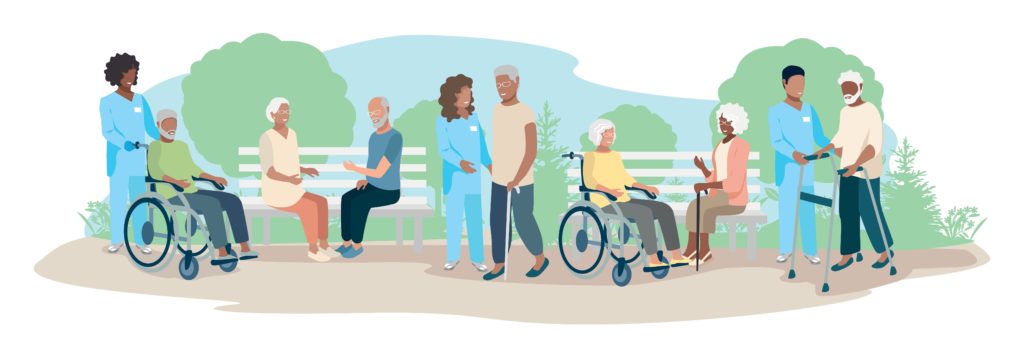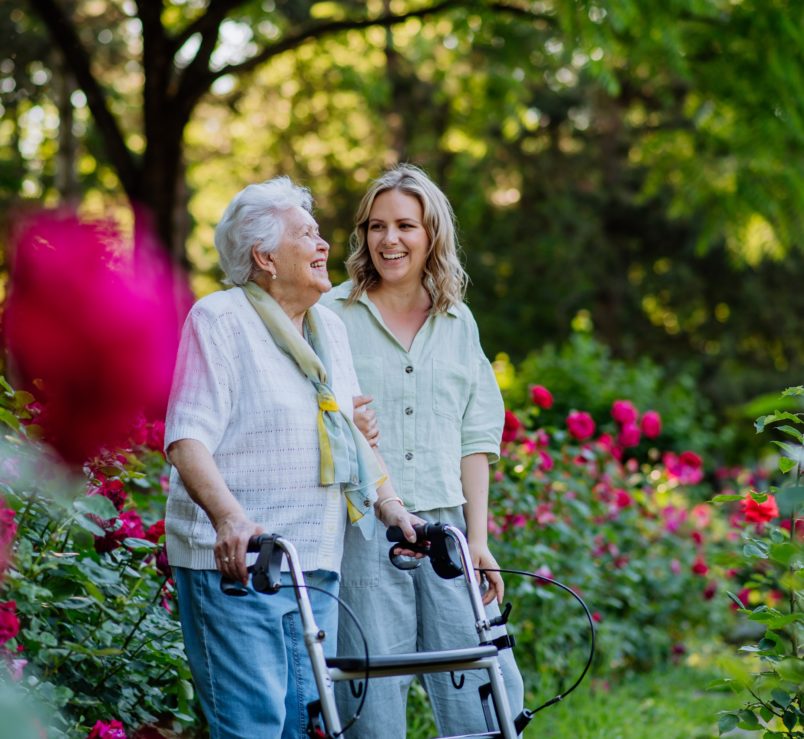Evaluating an intiative for future-proof community care
The Netherlands faces major challenges to the continuity of good, timely and affordable home care. The reason for this is the increasing demand for home care, while at the same time fewer people are able to provide this care.
In order to monitor the quality and accessibility of care and to make district nursing recognizable to clients and referrers, several organizations in Arnhem and the surrounding area started the partnership ‘Together in Community Care’. For three years, home care organizations, Rijnstate hospital, general practitioners and other cooperating parties have been working together to develop a new working method. The aim is to ensure that requests for care in district nursing quickly reach the right organization and the right care provider.
Ecorys has enjoyed monitoring and evaluating the effects of this partnership in recent years. Our research yielded useful insights that served as input for accountability to cooperation partners and the constant dialogue between stakeholders about the new way of working.

Ecorys monitored and evaluated the collaboration by:
- An inventory of the working methods of all home care organizations in preparation for designing and realizing an unambiguous and accessible inflow of care requests;
- The systematic manual reading and analysis of all (over 7000) incoming care requests in the mailbox, in order to gain insight and overview of the care requests in the working area;
- A participatory observation during evaluation meetings of (twelve) coordinating teams of district nurses and of (four) teams of specialized nursing to monitor developments;
- Presenting results in administrative and management consultations;
- A questionnaire among employees, managers and directors of home care organizations and referrers to identify experiences with the new way of working;
- Interviews with clients, referrers and nurses to gain insight into effects at the case level.
This yielded a number of interesting insights. The main mapped effects of Together in Community Care are:
- Improved cooperation within the new partnership: being there for each other when problems arise
- Insight into joint availability and capacity in the region.
- Improved efficiency in the care chain: faster and more care can be accepted
- Shift in the coordination of home care from referrers to district nurses, giving district nurses back control of care at home
- Saving (a lot of) time in arranging home care for referrers
- District nurses receive fewer app and phone messages in between and can concentrate on care
- Improving collaboration between hospital and home care
- More direction for clients and informal caregivers: they can quickly arrange the right care in the right place
- Spin-off: clout for innovation and quality impulses in home care
In addition to monitoring and evaluation, Ecorys also looked at the new practices implemented within the partnership. This included looking at the costs and benefits of the preoperative screening and the no-bending package, in order to better support patients before and after orthopedic surgery. The cost-benefit analysis concluded that positive financial results could be seen in the short term: the benefits exceeded the costs, already after a year of implementing the new working method. In addition, many qualitative benefits were also found, such as increased self-reliance and comfort for clients.
If you are interested in the monitoring and evaluation study or would like to discuss how the effects of your initiative can be mapped, please contact one of our experts.

19 October 2023
3 minute read
Services
Key Experts
Renée Rijntjes
Consultant
Tessa Huis in 't Veld
Consultant



